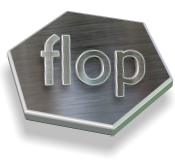Difference between pages "Package:Radeon Video Drivers" and "FLOP:Ports-2015"
| Line 1: | Line 1: | ||
{{ | {{FLOP | ||
| | |Created on=2015/02/23 | ||
| | |Summary=Collection of ideas and changes for the ports-2015 tree. The goal is to perform many scheduled changes with a single user configuration change. | ||
| | |Author=Mgorny, | ||
| | |Reference Bug=FL-1877 | ||
}} | }} | ||
== Procedure == | |||
Users of ports-2012 tree will be informed that the current repository is deprecated, and provided with complete migration instructions. The instructions will cover both necessary and optional changes that can be done conveniently along with the necessary switch. | |||
== | == Changes == | ||
=== | === History cut-off === | ||
As an implication of starting a new tree, all history is cut-off. While users were cloning the repository with --depth=1, old clones have accumulated a large history of changes. This history will be discarded with the new clone. This will significatly decrease the size of portage tree and the size of portage tree compressed tarball, if someone prefer to use it. Eventually, portage tree will grow up again. | |||
=== Portage upgrade / repos.conf switch === | |||
Reference: {{Bug|FL-1761}}, [[Repository Configuration]] | |||
As a part of upstream Portage changes, the upgrade is accompanied with some configuration file changes. Aside them, repository configuration is moved to repos.conf and the repository name becomes significant. Merging this with ports-2015 switch allows users to update the configuration in new format already. | |||
=== Repository rename === | |||
Reference: {{Bug|FL-1801}} | |||
Right now, the main repository inherits the name 'gentoo'. This is a bit confusing, considering that it is a modified Funtoo variant of the package tree. Changing the name to 'funtoo' would improve consistency and carry some bit of 'branding' into packages. Merging this into ports-2015 switch allows users to consciously update all repository references if necessary, and combines the change with necessity of specifying repository name in repos.conf. | |||
=== | == Other possible changes == | ||
=== Filesystem structure reorganization === | |||
Since users will be required to clone the new repository, it may be desired to suggest some best practices for filesystem layout. This specifically includes separating ebuilds from distfiles & packages, and using a multi-repository layout. Historically, portage tree inspired by FreeBSD ports, located in <code>/usr/portage>. This FHS layout is different in BSD and in Linux and we will probably move it elsewhere, see below for a suggestion and possible pros and cons. | |||
Example layout suggested by mgorny: | |||
# all repositories in ''/var/db/repos/${repo_name}'' (i.e. Funtoo repository in ''/var/db/repos/funtoo'', and possible overlays as other directories in ''/var/db/repos''), | |||
# distfiles in ''/var/cache/portage/distfiles'', | |||
# binary packages in ''/var/cache/portage/packages''. | |||
Users can be recommended to use a separate filesystem that can handle small files efficiently for ''/var/db/repos'', e.g. btrfs, reiserfs or possibly squashfs. | |||
{{FLOPFooter}} | |||
{{ | |||
Revision as of 13:50, February 23, 2015
Funtoo Linux Optimization Proposal: Ports-2015
Procedure
Users of ports-2012 tree will be informed that the current repository is deprecated, and provided with complete migration instructions. The instructions will cover both necessary and optional changes that can be done conveniently along with the necessary switch.
Changes
History cut-off
As an implication of starting a new tree, all history is cut-off. While users were cloning the repository with --depth=1, old clones have accumulated a large history of changes. This history will be discarded with the new clone. This will significatly decrease the size of portage tree and the size of portage tree compressed tarball, if someone prefer to use it. Eventually, portage tree will grow up again.
Portage upgrade / repos.conf switch
Reference: FL-1761, Repository Configuration
As a part of upstream Portage changes, the upgrade is accompanied with some configuration file changes. Aside them, repository configuration is moved to repos.conf and the repository name becomes significant. Merging this with ports-2015 switch allows users to update the configuration in new format already.
Repository rename
Reference: FL-1801
Right now, the main repository inherits the name 'gentoo'. This is a bit confusing, considering that it is a modified Funtoo variant of the package tree. Changing the name to 'funtoo' would improve consistency and carry some bit of 'branding' into packages. Merging this into ports-2015 switch allows users to consciously update all repository references if necessary, and combines the change with necessity of specifying repository name in repos.conf.
Other possible changes
Filesystem structure reorganization
Since users will be required to clone the new repository, it may be desired to suggest some best practices for filesystem layout. This specifically includes separating ebuilds from distfiles & packages, and using a multi-repository layout. Historically, portage tree inspired by FreeBSD ports, located in /usr/portage>. This FHS layout is different in BSD and in Linux and we will probably move it elsewhere, see below for a suggestion and possible pros and cons.
Example layout suggested by mgorny:
- all repositories in /var/db/repos/${repo_name} (i.e. Funtoo repository in /var/db/repos/funtoo, and possible overlays as other directories in /var/db/repos),
- distfiles in /var/cache/portage/distfiles,
- binary packages in /var/cache/portage/packages.
Users can be recommended to use a separate filesystem that can handle small files efficiently for /var/db/repos, e.g. btrfs, reiserfs or possibly squashfs.
